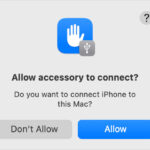Transferring photos from your iPhone to your iMac is a common task for Apple users. Whether you’re freeing up space on your phone, backing up precious memories, or editing your photos on a larger screen, there are several straightforward methods to achieve this. This guide will walk you through the most effective ways to transfer your photos, ensuring you don’t lose any of your cherished moments.
Method 1: Leveraging iCloud Photos for Automatic Sync
For users deeply embedded in the Apple ecosystem, iCloud Photos offers the most seamless and integrated solution. When enabled, iCloud Photos automatically uploads and synchronizes your entire photo and video library across all your Apple devices, including your iPhone and iMac. This means any photo you take on your iPhone will almost instantly appear on your iMac, and vice versa.
iCloud Photos provides several key benefits:
- Automatic Synchronization: Photos and videos are synced in real-time across devices.
- Storage Optimization: You can choose to store full-resolution originals in iCloud and device-optimized versions on your devices to save space.
- Accessibility: Access your photos on iPhone, iMac, iPad, and even on iCloud.com.
- Organization Sync: Edits, albums, and organizational changes are reflected across all devices.
To set up iCloud Photos on both your iPhone and iMac:
On your iPhone:
- Open the Settings app.
- Tap on your Apple ID at the top.
- Select iCloud.
- Tap on Photos.
- Toggle iCloud Photos to the ON position.
On your iMac:
- Open the Photos app.
- From the menu bar at the top of your screen, choose Photos, then Settings (or Preferences in older macOS versions).
- Click the iCloud tab.
- Select the checkbox next to iCloud Photos to turn it on.
Ensure you have sufficient iCloud storage to accommodate your photo library. You can check your current storage and upgrade your iCloud plan if needed through the iCloud settings on both devices.
Method 2: Importing Photos to Your iMac Using a USB Cable
If you prefer a direct connection or don’t want to rely solely on cloud storage, transferring photos via a USB cable is a reliable alternative. This method involves physically connecting your iPhone to your iMac and using the Photos app to import your images.
Here’s how to import photos using a USB cable:
-
Connect your iPhone to your iMac using a USB cable. Typically, this will be a Lightning to USB-A or USB-C cable depending on your iMac model.
-
You might see a prompt on your iMac asking to allow the accessory to connect. Click Allow.
 Accessory prompt to allow or don’t allow accessory to connect.
Accessory prompt to allow or don’t allow accessory to connect. -
Open the Photos app on your iMac. It’s usually located in your Applications folder or on the Dock.
-
The Photos app should automatically detect your connected iPhone and display an Import screen. If it doesn’t appear automatically, look for your iPhone’s name in the sidebar of the Photos app and click on it.
-
If prompted, unlock your iPhone using your passcode or Face ID/Touch ID. Also, if you see a “Trust This Computer” prompt on your iPhone, tap Trust to proceed.
-
Choose where you want to save the imported photos. You can select an existing album from the Album dropdown menu or create a New Album to organize your imported photos.
-
Select the specific photos you wish to transfer, or click Import All New Photos to import all photos and videos that haven’t been imported previously.
 Mac screen showing the photos available for import
Mac screen showing the photos available for import -
Click Import Selected or Import All New Photos to begin the transfer process.
-
Wait for the import to complete. Once done, you can safely disconnect your iPhone from your iMac.
Your photos are now imported into your iMac’s Photos app library, ready for viewing, editing, and sharing.
Method 3: Transferring to a Windows PC (Brief Overview)
While this guide primarily focuses on transferring photos to an iMac, it’s worth briefly mentioning how to transfer photos from an iPhone to a Windows PC, as many users might also have Windows machines.
To transfer photos to a Windows PC, you can use the Apple Devices app:
- Install the Apple Devices app from the Microsoft Store on your PC.
- Connect your iPhone to your PC with a USB cable.
- Unlock your iPhone and tap Trust on the “Trust This Computer” prompt if it appears.
- Follow Microsoft’s guide on their website for detailed steps on importing photos to the Microsoft Photos app in Windows.
For optimal compatibility with Windows, you can adjust your iPhone camera settings to capture photos in JPEG and H.264 formats by navigating to Settings > Camera > Formats > Most Compatible.
Conclusion
Transferring photos from your iPhone to your iMac is a straightforward process with multiple options to suit your needs. For Apple ecosystem users, iCloud Photos offers the most convenient and automated solution for keeping your photo library synchronized. Alternatively, using a USB cable and the Photos app provides a direct and reliable method for importing your photos. Choose the method that best fits your workflow and enjoy your photos on your iMac!

